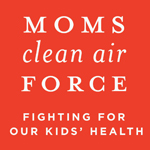 I am a bit of a DIY maven. If I can’t find an item that I need or want, I locate a tutorial, purchase a how-to book, or join a group. Figuring out how to make something is an immensely rewarding challenge – it truly becomes yours.
I am a bit of a DIY maven. If I can’t find an item that I need or want, I locate a tutorial, purchase a how-to book, or join a group. Figuring out how to make something is an immensely rewarding challenge – it truly becomes yours.
I’ve been watching the emergence of the latest DIY wave. It began very grassrootsy, and to some degree this convergence of art, craft, music and design is still an indie movement. Some say there is a new dimension in the latest surge of DIYers based on the fantastic craftiness of the 1970’s. Our parents and grandparents rocked it like they rocked the Clean Air Act in 1970. Unfortunately, while DIY may be on the rise, clean air is taking a nosedive.
Clean Air Belongs To Us!
According to the latest health, political and environmental exposés, air pollution is soaring. Asthma rates are ridiculous, the planet is heating up, and some politicians are teaming up against our kids with pro-polluting power company CEO’s. These folks are lying, distorting, and fabricating the facts to confuse and insult the public.
The sobering evidence might make you want to never leave your house, but experience tells that nothing good comes from that. The problem doesn’t go away…it only gets worse.
In the spirit of DIY, let’s make our own Clean Air Act!
3 Ways To Create Your Own Clean Air Act
1. Identify there is a problem to solve. This is an easy one…The American Lung Association published an important document, the State of the Air that analyzed the data and proved one in five people still live in communities with lethal levels of smog and particulate pollution. Need more ammo? Read on.
2. Figure out the cost. The cost is our time, energy, and parent power. The legwork can get done by joining the fight. We can email our public officials, share clean air ideas with our communities through Twitter and Facebook, and tell those who believe it is too expensive to protect our air, water and land, that it's much more expensive not to.
3. Dive in and make it yours. The last clean air fix to limit emissions in 2008 was politically driven. President Bush chipped away at recommendations for stronger protections. These standards allowed far more ozone than the EPA’s science advisers unanimously recommended, and far more than Clean Air Act requirements at the time allowed. We can cut through the political smog.
Here's how moms and dads can drive the clean air movement:
Pollution Monitoring Enforces The Law - Let’s keep our eye on the ball and work with scientists and state officials to lower the monitoring costs, expand the ability to track pollutants, and protect the legacy of the Clean Air Act.
Don’t Delay – Unfinished projects are the bane of a DIYers existence. They are costly and unproductive. Clean air delay tactics are dangerous because they also cost lives. If the rules continue to erode, and politically-driven decisions take the place of scientific ones, our children will continue to suffer.
Work Together - Just like creating a group project, we can create a DIY Clean Air Movement. Participate in strengthening air quality by restoring a commitment to science and law that will protect our kids from pollution. It will not just bring immense DIY satisfaction, it can give our kids the healthy future they deserve.
Join the DIY Clean Air Movement because...Clean Air Belongs To Us!





